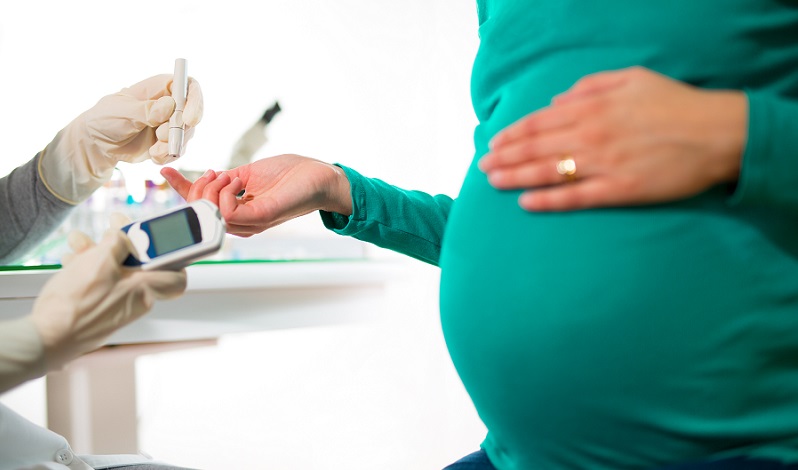Most people are aware of type 1 and type 2 diabetes, but there are very few people who even know about the existence of gestational diabetes. So what even is gestational diabetes?
Like the other two types of diabetes, gestational diabetes or GD for short develops when the body is unable to produce sufficient amounts of insulin and the difference is that GD happens only in pregnant women. So, do you know how to tell if you have gestational diabetes and treat this condition effectively?
Signs of Gestational Diabetes
Generally speaking, there are no clear cut signs or symptoms that indicate one may have GD. Whatever symptoms women do end up experiencing tend to be pretty mild. Even so, here are some symptoms of gestational diabetes you should keep an eye on.
- Nausea
- Going to the bathroom often
- Losing weight despite maintaining your regular diet
- Vomiting
- Frequent skin, vaginal or bladder infections
- Blurred vision
- Fatigue/exhaustion
- Blurred vision
- Sugar in urine, revealed in a test done in your doctor’s office
- Feeling very thirsty
- Increased hunger

Complications If Gestational Diabetes Gone Unchecked
Next, it’s time for you to know how important it is to keep your GD in check. Because if you are even a little careless, it can lead to complications for you and your baby, including:
- Increased chances of getting high blood pressure during your pregnancy;
- Large birth weight;
- Increased chances of delivery by C-section;
- Premature delivery;
- The baby might experience hypoglycemia (low blood sugar) after the first few days of their birth;
- Birth injury or trauma to the child;
- In extreme cases, untreated GD can lead to increased risk of fetal and neonatal death. Keeping your blood sugar levels in check decreases this risk factor by a lot.
- Generally speaking, higher sugar levels go back to their normal levels after the child has been delivered. But in the case of some women, a close watch is needed because they tend to develop diabetes around 5 years after giving birth. Do know that if you developed GD during pregnancy, you’re automatically at a higher risk of developing type 2 diabetes.
Note: As is always the case in such situations, please do sit down and have a talk with your doctor regarding what your options are. They are the best person in charge who can help you with your GD. Do not hesitate for even a second if you think you’re displaying signs of gestational diabetes –better safe than sorry!

Know the Risk Factors
While any woman can get gestational diabetes, certain women are at higher risk than others. So what are the factors that increase your chances of getting this type of diabetes?
- Being overweight: The more you’re above your ideal weight, the higher your chances of developing GD. The ones at the highest risk are those with a BMI (body mass index) of 30 or more.
- People of certain races: Women who are of Asian, South Asian or African races are more likely to get GD. The reasons for this haven’t yet been understood by science.
- Women over the age of 25: Their chances of developing GD increases with age.
- Family history: If people in your family have pre-diabetes, then your chances of getting GD increase.
What Are Your Chances of Getting GD?
After knowing the signs of gestational diabetes, you should know where you stand when it comes to GD. Approximately speaking, 5% of would-be mothers develop GD. If you’re a woman who has one or multiple risk factors working against you, then your chances of getting GD increase to almost 9%.
Usually, it is between the 24th and 28th week that you are screened for GD. Why during such a specific period of time? That’s because during this time, your placenta produces huge amounts of hormones, which may result in your body developing resistance to insulin. If the screening shows high levels, then you will be tested further with more GD specific tests.
If you’re worried about the test, don’t be! All you will have to do is to take the oral glucose tolerance test, after which the doctor will draw out some of your blood which will then be tested to determine whether or not you have GD.

What Do I Do If I Have Gestational Diabetes?
The best way to control your GD is, of course, to keep your blood sugar levels in check. The first and most important way of going about that is by controlling the amount of sweets you eat, substituting sugar with stevia… whatever works! But here are other things you need to keep in mind:
- Closely monitor you and your baby's blood sugar levels four to five times a day, like first thing in the morning or after meals. Further exams and tests may be needed. Self-monitoring of your glucose level can help a lot.
- Follow the diet plan given by the doctor closely. Add more whole, vegetables, fruits and other foods rich in fiber but low in calories and fat to your diet. Besides, cut down on sweets and other highly refined carbohydrates.
- Exercise regularly, helping stimulate the body to send glucose into the cells to be used as energy and increasing your cell's insulin sensitivity; besides, exercise can help soothe your discomforts during pregnancy, like swelling, back pain, constipation, muscle cramps, etc.
- Accept insulin therapy, if necessary. If home remedies fail, you should turn to medical help. Insulin injections help lower blood sugar levels effectively. An oral blood sugar control medication may be also needed. But do ask your doctor before taking any medication.
You can monitor your glucose levels easily at home with at home diabetes testing kits. The most common way of getting an accurate reading is by pricking your finger with a small needle, and putting that little amount of blood on the diabetes machine so that it can give you a reading.
With the information about signs of gestational diabetes, treatments and so on, you can keep your condition in control.

